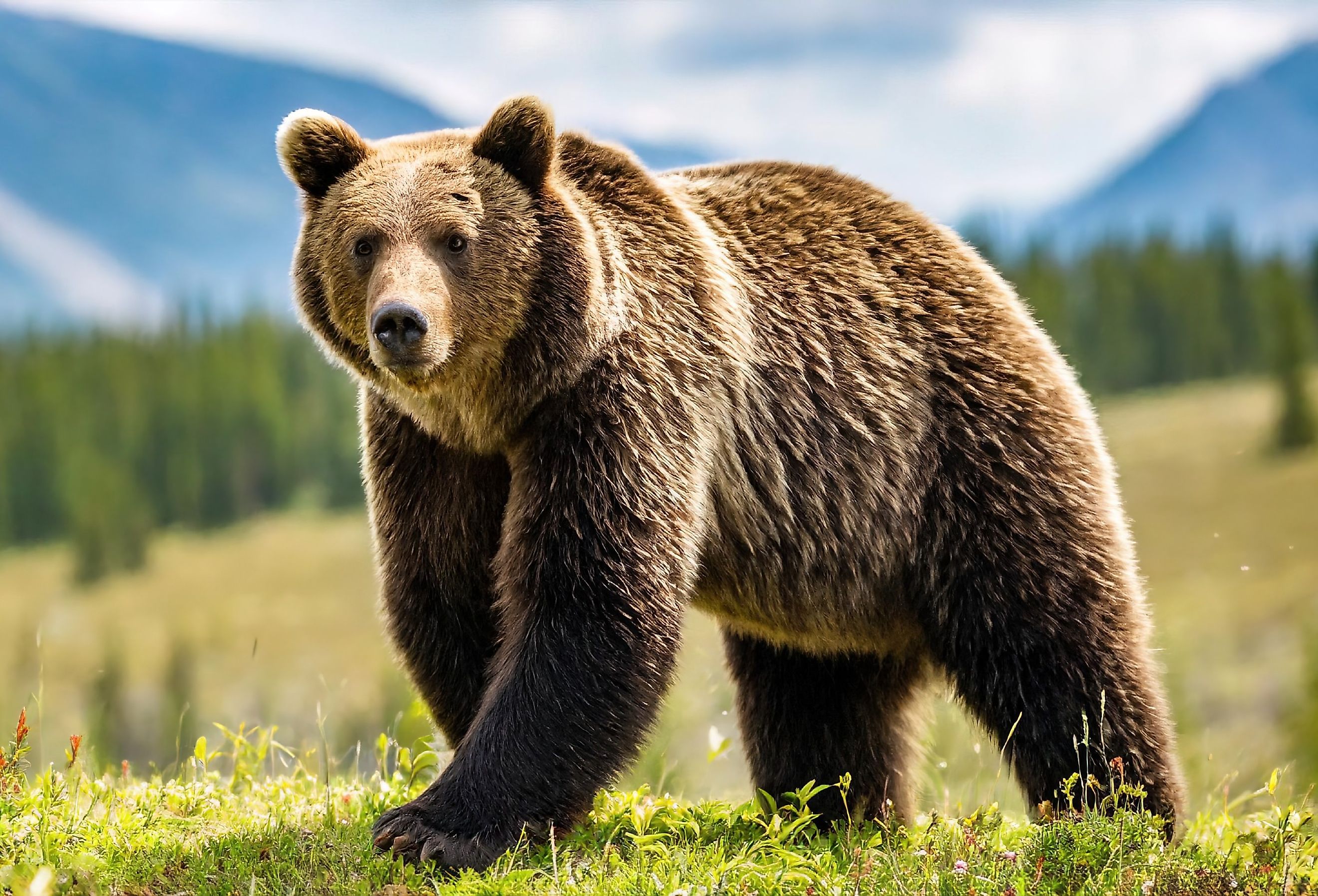
The 13 Deadliest Animals in Montana
The state of Montana is home to beautiful landscapes, including vast prairies, the Rocky Mountains, National forests, Glacier National Park, and a tiny bit of Yellowstone National Park. Surrounded by North and South Dakota, Idaho, and Wyoming, it is also bordered by Canada. Known for its Indigenous heritage, exploration opportunities, and livestock, it is home to dozens of different animal species. While many of these creatures are harmless and a sight to behold, a handful of them are extremely dangerous, if not downright deadly.
Grizzly Bear
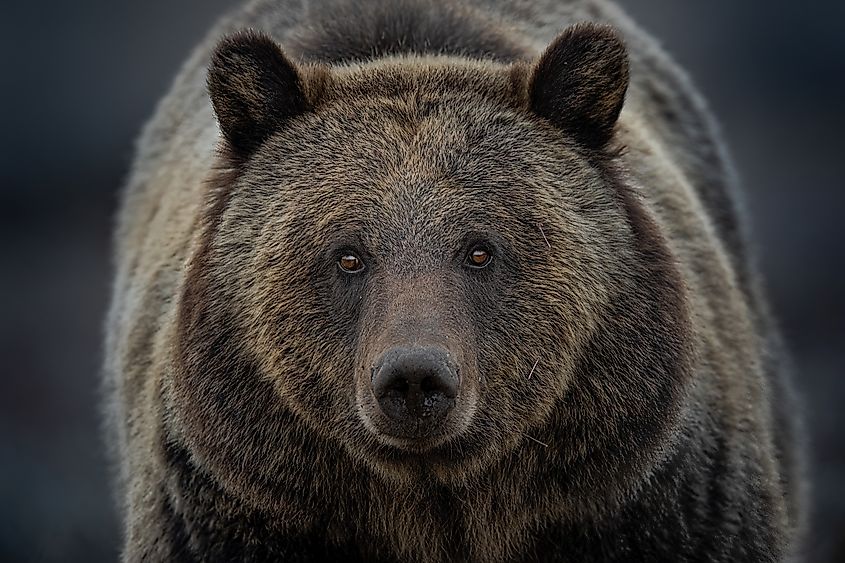
Grizzlies are a massive species of bear known for their aggression and their desire for their own territory. As solitary creatures, they will often clash with one another unless mating or a mother is caring for her cubs. Recognizable by their thick, often extremely dirty fur, huge statures, rounded ears, and the hump between their shoulders, these bears can weigh between 300 and 800 pounds.
Grizzlies can be found in forests, mountainous areas, and meadows, as well as near rivers and lakes. They are omnivores, feasting on fruits, fish, and other mammals. They bulk during the summer months so that they can hibernate during the winter. Grizzlies can turn aggressive quickly, especially if they feel threatened, or feel as if you are intruding on their territory.
If you encounter a grizzly, do not run. Utilize bear spray if you have it, and talk calmly. Try to make yourself look bigger, but do not act aggressively. If the bear charges, lay flat or on your side in the fetal position to protect your organs. Use your backpack or other hiking materials to shield your head and neck. Play dead until the bear becomes bored and leaves. Only when the bear is at a safe distance is it safe to slowly retreat.
Cougars
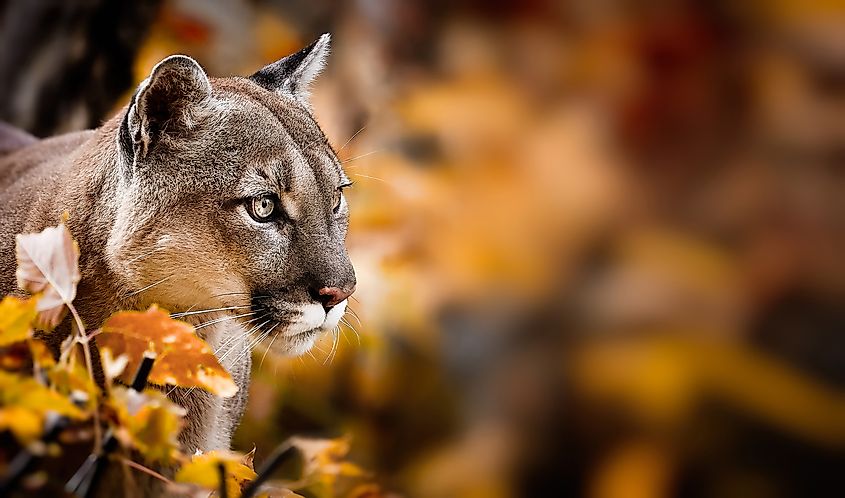
Cougars are a type of feline that frequent mountainous areas, forests, and sometimes even urban areas. They are stealthy, solitary creatures with excellent hearing, impressive speeds, and sharp teeth and claws. Their muscular builds are often sandy or greyish-brown in color. They are capable of climbing, chasing, stalking, jumping, and swimming.
Cougars mainly hunt deer and livestock, as well as rabbits, rodents, and birds. They are also more than capable of killing pets, including outdoor cats and unleashed dogs. They are also a threat to small children. Cougars are aware of your presence far before you are aware of theirs, and can attack without warning. If approached by a cougar, appear as big as possible and wave your arms. Yell and talk loudly. Throw nearby debris. Do whatever you need to do to spook it. When walking or playing in cougar territory, keep a close eye on children and pets, and don't let them walk behind you or play alone outside.
Bison
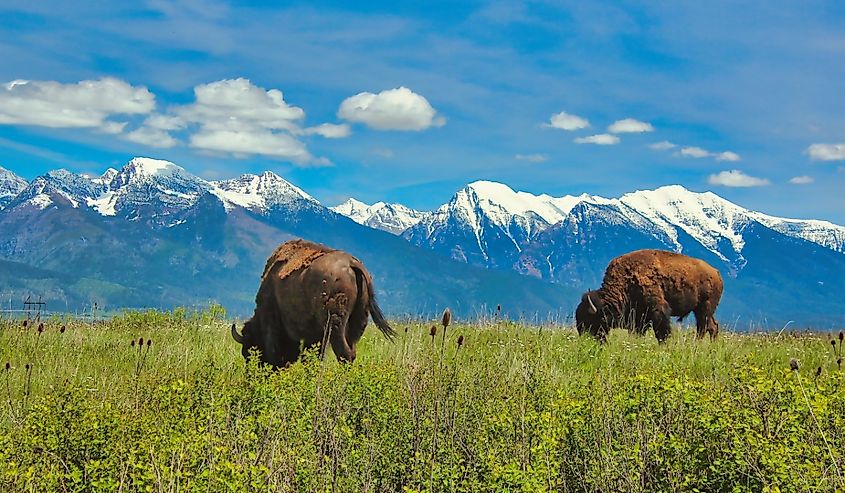
Bison are magnificent creatures known for their massive size, fuzzy manes, and sharp horns. They also have a distinctive hump above their shoulders. As herbivores, these animals feed on grass, shrubs, and other plant life. They like to live in herds, both for protection and a sense of family. Once abundant in North America, especially on the Great Plains, bison were overhunted, and their numbers drastically dwindled. Today, their numbers are slowly growing, and conservation efforts have been made to return them to National Parks and other areas.
Bison aren't inherently aggressive but can become territorial and protective of their herd. You should never approach a bison in an attempt to pet it or take a photo. Do not feed them. Do not try to startle them. They can attack without warning, charging what they consider to be a threat. Using their horns, they gore their victims, easily ripping into flesh and causing broken bones and severe bleeding. They are also capable of throwing their victims into the air, stomping them with their hooves, and swinging them around while their horns are still lodged inside.
Elk
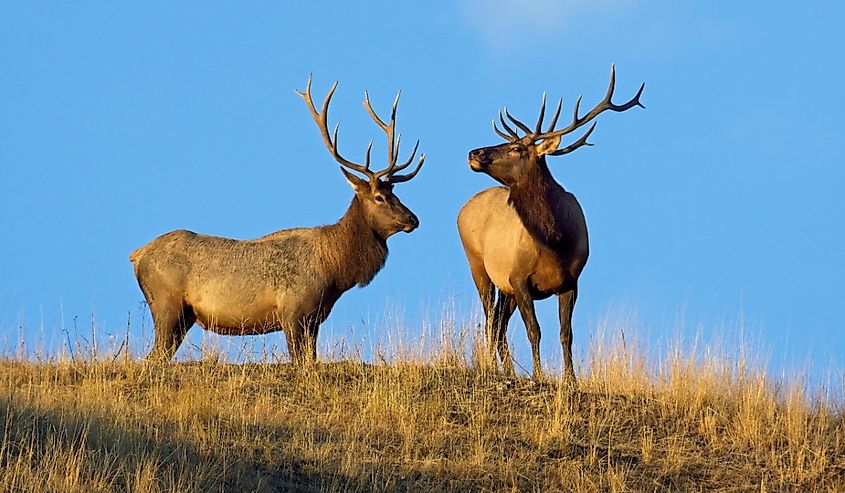
Elk are a member of the deer family and one of the largest species. They can weigh between 500 and 1,000 pounds, depending on whether they are male or female. Their coats can range from reddish brown to grey, and they have white rumps and darker-colored necks. The males also have massive antlers, which they regrow every year and use to clash with other suitors vying for a potential mate or to show dominance.
Elk eat grass, leaves, bark, and other plant life. They live in herds, opting to graze with each other and travel in groups to minimize threats. Elk can be seen extremely close to urban areas, often hanging out by roadways or in fields next to townsites. They aren't usually aggressive unless threatened. They do become much more aggressive during rutting season when the males are looking to be seen as the best mating option and wish to challenge those around them. Elk can cause substantial damage with their antlers, leaving you with broken bones, bruising, and flesh wounds.
Wolverine
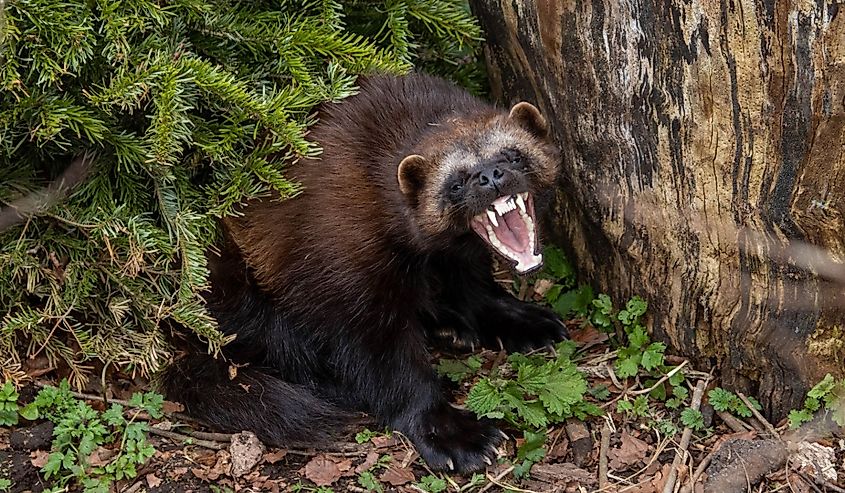
Wolverines are muscular animals with extremely sharp claws and a feisty attitude. They have bushy tails, short legs, and broad heads with thick brown fur. Found in forests, mountains, and tundras, they hunt rabbits, rodents, and livestock such as chickens. They will also feast on the carcasses of larger, dead animals. Extremely territorial, they mark their surroundings with their scent. They seem to have no fear and will stand their ground.
While wolverines don't attack humans, preferring to stay hidden, they can and will attack pets, leading to multiple fatalities a year. Outdoor cats and unleashed dogs are at the highest risk, as are farm animals. If you see a wolverine, count yourself lucky as it is a rare sight, but make sure to give it lots of space to retreat. Do not allow dogs to chase after it, and keep cats indoors.
Prairie Rattlesnake
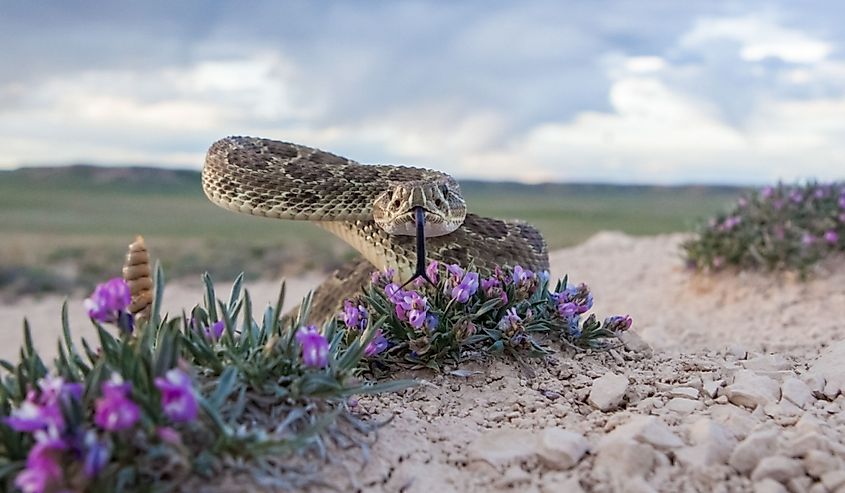
These rattlesnakes are venomous pit vipers found throughout Montana. They have triangle-shaped heads, a narrow neck, and thick bodies. Varying from green to brown, they have darker markings running horizontally along their length. They can be found in a variety of areas, such as forests, grasslands, rocky terrains, and deserts. As carnivores, they feast on rodents, small mammals, birds, and amphibians. Using heat-seeking pits located on their face, they can sense warm-blooded creatures, which they subdue with their venom and swallow.
Bites on humans are rare but do happen, usually because the snake feels threatened. This can be because someone didn't listen to its warnings, such as the rattling of its tail, or stumbled upon their hiding spot. Their bites release a hemotoxin, which disrupts blood clotting and kills red blood cells. Bite symptoms include severe pain, swelling, breathing issues, nausea, and vomiting. If bitten, do not panic and keep your heart rate down to slow the spreading of venom. Seek out immediate medical attention so that an anti-venom can be administered.
Deer
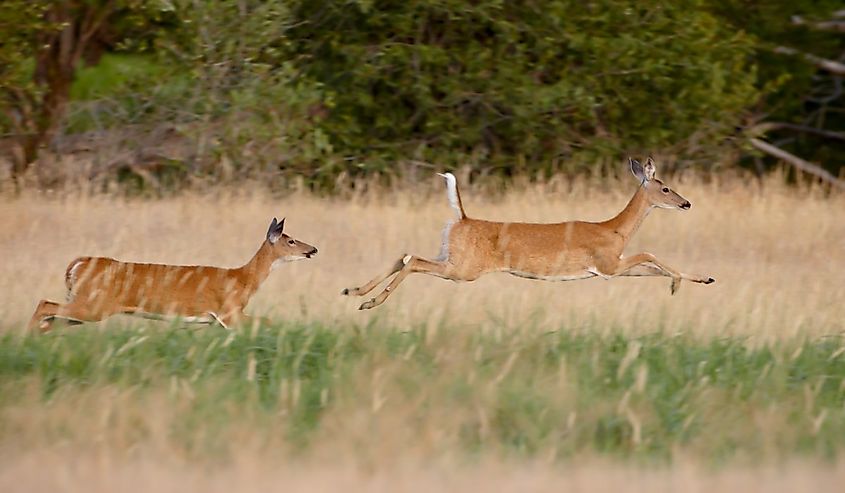
Deer, like elk, are herbivores, which could lead one to wonder how they could possibly be deadly. But deer have a nasty habit of carrying ticks and running onto roads, which leads to dozens of collisions every year, as well as injuries and fatalities.
Deer like to live in areas with lots of vegetation, such as prairies, forests, and farmland. They enjoy feasting on leaves, grass, berries, and other plant life. They are most active during dusk, dawn, and overnight, which is when keeping an eye out for these animals becomes extremely important. Deer are easily startled, and if you encounter one on foot, it will run off without conflict. But they commonly dart in front of cars, leaving drivers little time to react. When struck, they can cause major damage to the vehicle, as well as its occupants, either from the crumpling of the exterior or by the deer coming in through a window or the windshield. Accidents can also occur from drivers stopping or swerving to avoid them, endangering others on the road as well as themselves.
The best way to avoid deer collisions is to keep an eye on the sides of the roads when driving in deer-prone areas and to be prepared to stop without warning. Look for the reflection of their eyes in your headlights, and if you spot one deer, chances are there are more.
Black Bear
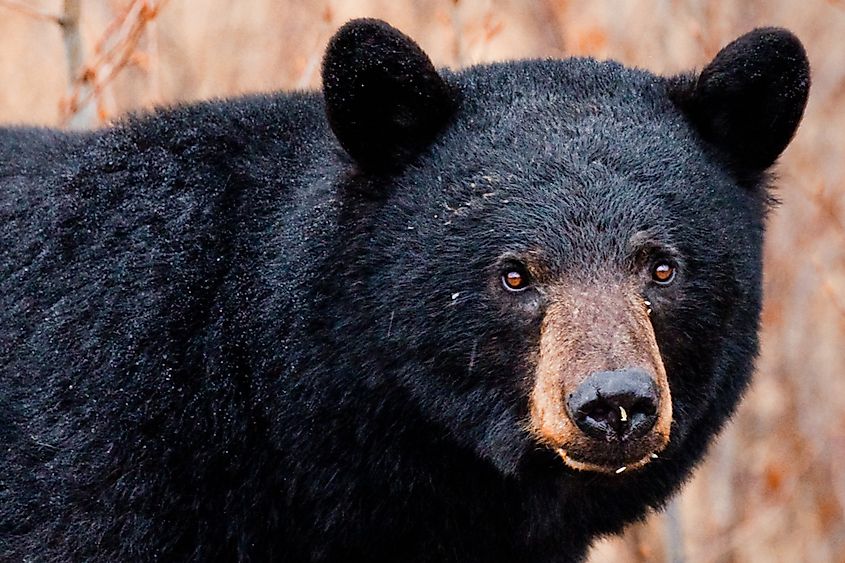
Black bears are much smaller than grizzlies, and usually not as aggressive, but they can still harm humans and pets if given the chance. These stout mammals are characterized by their rounded ears, brown to black coloring, stumpy tails, and short legs. They are common in forests, mountainous areas, and urban areas where garbage and food are abundant. They are both omnivores and scavengers and are enticed by the smell of anything that might be edible. This includes left-out trash, campsites, and picnics. Never feed black bears or make it easier for them to find food, as this will encourage them to visit human-inhabited areas more often, leading to conflicts as well as the bear being relocated or, in some cases, euthanized.
If you spot a black bear, make loud noises and appear as big as possible. They will often retreat. If the bear is aggressive, use bear spray, and stand your ground. Do not run since this will make you seem like prey. Black bears have sharp claws and teeth, as well as strength, and given the chance can cause bodily harm as well as kill other animals like outdoor cats and unleashed dogs.
Wolves

Wolves are elusive canines that are known for being beautiful, spiritual animals. Frequenting forests, mountains, and rivers, they are carnivores that hunt in packs. Wolf packs are incredibly structured, and everyone plays a vital role. Hunting smaller mammals such as rabbits, they also go after large prey like deer, moose, and livestock. They communicate through howls, barks, and growls, as well as scent markings. Wolves have a defined territory, which is usually respected by other wolf packs in order to avoid conflict.
Wolf and human altercations are extremely rare, as they do not see us as prey. But attacks can happen if the wolves feel threatened. Wolves are a bigger threat to pets, and can easily maul and eat dogs and cats. Mainly nocturnal, it is recommended to bring all pets inside during the night, especially outside cats, and to keep livestock protected with either a livestock guardian dog or by securing them in barns and other structures.
Moose
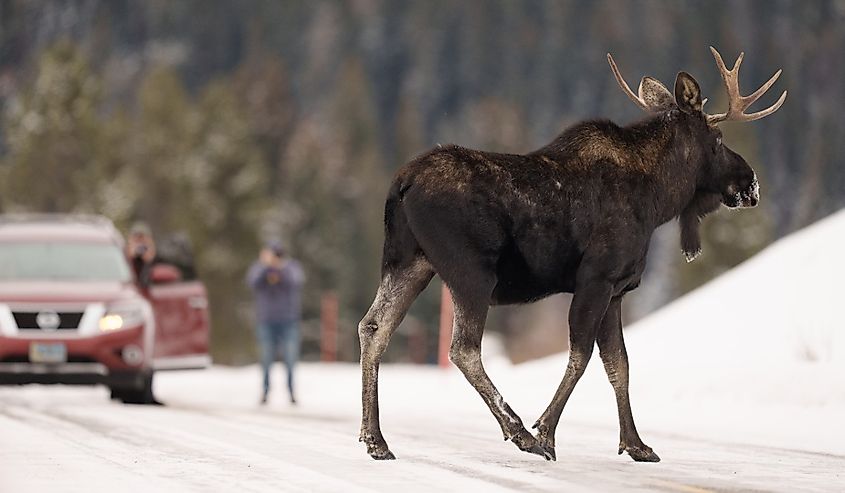
Moose are massive creatures with gigantic antlers, long legs, and distinctive characteristics such as the flap that hangs under their chin and the hump on their upper back. As herbivores, they feast on aquatic vegetation, leaves, twigs, grass, and other plant life. Solitary mammals, they can be seen grazing in meadows, forests, and near water sources.
Moose are dangerous in two ways. One is due to their aggressive behavior when they feel threatened or challenged. Moose are fast and can utilize their antlers to cause bodily harm and damage surrounding objects like cars. They can also stomp with their front legs, and kick with their back.
Another way they are dangerous is when they are struck by oncoming cars. Due to their height, moose will often be struck in the legs, causing their bodies to crash into the hood and into the windshield. Panicked, they will thrash and kick, leading to further damage. To avoid moose collisions, stay alert when driving, especially at night. To avoid having a face-off with a moose in person, do not startle them or approach them. If a moose begins to charge, put something between you, such as a fence or a car, or get indoors.
Ticks
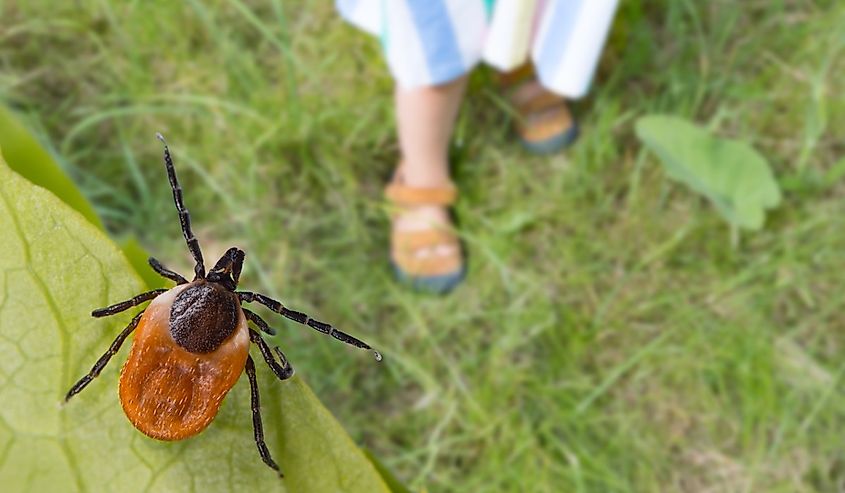
Ticks are tiny, bloodsucking nuisances found in areas with dense plant life. They commonly inhabit tall grass, in forests, and anywhere else where they can hang out and wait for a potential food source to walk by and brush up against them. Attaching to the host with their mouths, they can feast on their blood for several days. During this time, diseases can be transmitted from the tick to their victim, bringing along a lengthy list of problems.
Ticks common in Montana include American dog ticks, soft ticks, wood ticks, and brown dog ticks. They can carry diseases such as Rocky Mountain spotted fever, tularemia, and Colorado tick fever. Symptoms of these diseases include flu-like symptoms, rashes, swelling, pain, and fevers. The best way to avoid tick bites is to wear long clothing when out in the wild, as well as appropriate footwear. Make sure to check yourself and others, including pets, when you return home or to your campsite. If you locate a tick, carefully remove it so as not to detach the mouthpiece, and save it for identification. Monitor yourself for tick-related illnesses, or go and see a medical professional if you are concerned.
Bobcats
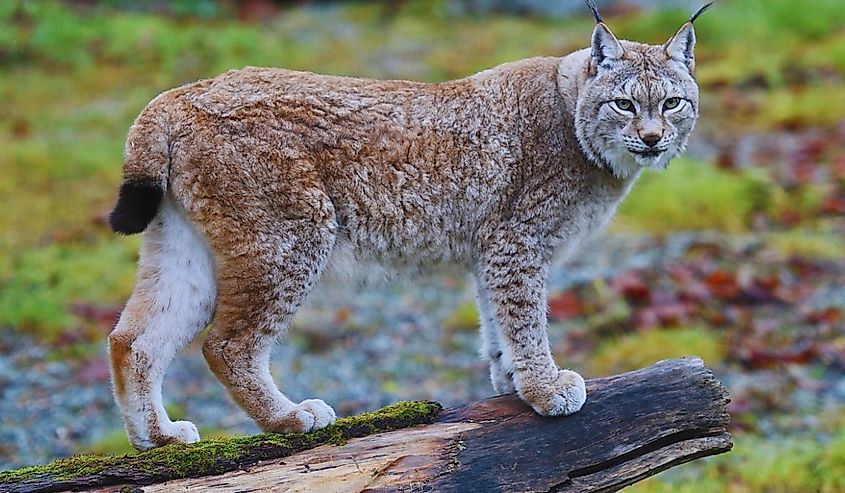
Bobcats are members of the feline family, like house cats and cougars. They are medium in size, much smaller than a cougar but larger than your average pet. They are characterized by their fluffy coats, which range in color from grey to sandy to brownish. They have stubby tails, massive paws, and black tufts of hair at the tips of their ears. Solitary hunters, they prey on rodents, birds, and smaller mammals such as rabbits. Highly adaptable, you can find them in various areas like forests, mountains, deserts, meadows, and even near townsites.
Mainly nocturnal, they mark their territory with their scent and with scratch marks. They don't actively seek out humans, and sightings of them usually end with the animal running away. While they are capable of causing harm to adults, usually due to being cornered, they do pose a larger threat to pets and small children. Bobcats can easily take down dogs and cats, which they see as prey. Make sure to keep cats indoors in areas bobcats frequent, and keep dogs leashed. If a bobcat approaches or tries to attack, make loud noises and appear larger than you are.
Black Widow Spider
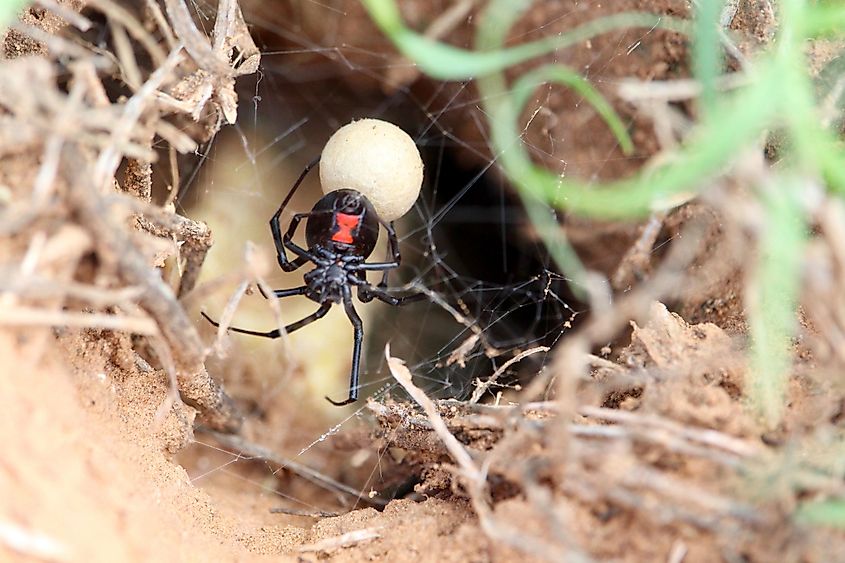
Black widow spiders are iconic spiders known for their black bodies and red hourglass markings. However, only the females display this coloring; the males are often more brown and do not have the hourglass. They build messy webs in secluded areas, like basements, cellars, attics, woodpiles, sheds, and places with lots of debris. This ensures they aren't disturbed by predators and can also stay hidden while they hunt.
Black widows feast on insects and don't seek to harm humans, but bites do happen. This is usually because you disturbed them, either by leaning on, climbing over, or shuffling around in their hiding spots. When a black widow bites, it releases a neurotoxic venom that affects the nervous system. Bite symptoms include muscle pain and cramps, abdominal pain, nausea, vomiting, and breathing issues. If bitten by a black widow, seek medical attention.
It is important to always know how to handle a dangerous wildlife situation. Whether that is coming prepared with bear spray, a first aid kit, and a cellular device, or being aware of what might dwell around you, it is always a good idea to familiarize yourself with potential issues. Know where not to disturb, including woodpiles and vacant lots, and do not approach wildlife. Montana is a breathtaking state with endless opportunities for adventure, and no one wants that to be ruined by an unfortunate run-in with a not-so-friendly animal. So be prepared, and be aware when you are around these deadliest animals.











